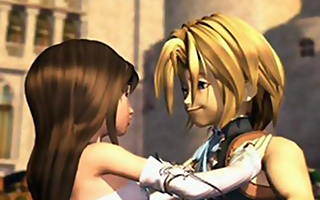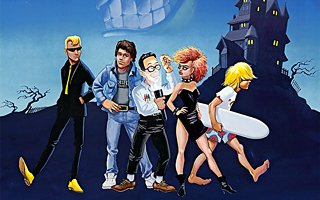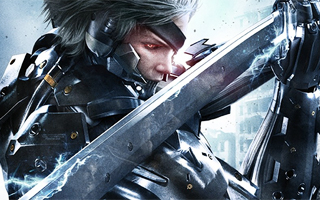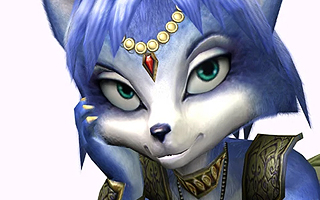MSX2
Top 10 Best MSX2 Games of All Time!
Sequels are rarely as good as the original, but the second generation of MSX hardware could be likened to The Empire Strikes Back or Terminator 2. The MSX2 was basically a supercharged MSX with more memory and a better video display processor. Incidentally, these changes allowed for more sophisticated games. The MSX platform received support from many major Japanese studios, and the MSX2 is especially noteworthy for launching the Metal Gear franchise. Games released for the first-generation of MSX computers were already recognized elsewhere on this site, so this list will include games released for the MSX2 and MSX2+.
10
Vampire Killer
1986

Although it’s often erroneously cited as the first Castlevania game, Vampire Killer is the second game in the series and arrived on the MSX2 a month after the first Castlevania was released for the Famicom Disk System. Either way, it was still an ambitious game for 1986. Like Castlevania, Vampire Killer is a side-scrolling action/adventure game starring a whip-wielding vampire hunter named Simon Belmont. Both games take place in the same unforgettable castle filled with ghosts, skeletons, and an inordinate amount of pork chops hidden in the walls. With the exception of Dracula’s second form, the boss battles in the games are nearly identical. There are many areas where Vampire Killer differs from Castlevania, however. Most notable is that the screen doesn’t scroll in Vampire Killer and the stages are instead comprised of a series of static, self-contained screens. The game is also slower-paced. Castlevania would bombard players with endless onslaughts of flying Medusa heads and erratic fleamen, but Vampire Killer never has more than a couple of enemies on screen at a time and the enemies won’t reappear unless you exit the screen. The action components are significantly toned down in Vampire Killer, but a greater emphasis is placed on exploration. Hidden walls are more prevalent and numerous keys are needed in order to open locked doors. It’s sometimes necessary to jump into pitfalls, and one stage even requires players to navigate through a maze of sewer tunnels. Vampire Killer basically has the same soundtrack as Castlevania, but the percussion is more pronounced on the MSX2. Vampire Killer isn’t quite as legendary as its more-famous brother, but you won’t find a better action/adventure game on the MSX2.
9
Space Manbow
1989

The MSX was home to a number of popular side-scrolling shooters from Konami – including Gradius and Salamander among others – but Space Manbow was the only Konami shooter released for the MSX2. The fact the game was developed specifically for the MSX2 rather than being ported from an existing arcade game meant that Konami was able to fully optimize the game for the MSX2 hardware. The scrolling is smooth, the sprites are detailed, the game is fast-paced, and there are even multi-plane backgrounds. “Manbow” appears to be a mistranslation of sorts and actually refers to the fact that the ship is shaped like a mambo fish. Many enemies ships employ similar fish-based themes, but you’ll also encounter walking robot tanks and a plethora of generic turrets mounted on floors and ceilings. The game provides players with two weapons, missiles, and a couple of auxiliary firing ships that can be configured to shoot in the four cardinal directions. The power of your weapons gradually depletes as your progress through the game, so it’s necessary to collect orange orbs along the way if you want to retain your fire power. Space Manbow was re-released on Nintendo’s Virtual Console in 2009, but it wasn’t made available to North American or European markets. I guess the game is destined to live in obscurity.
8
Psycho World
1988

Psycho World combines action and platforming elements and almost feels like a faster version of Mega Man at times. The game stars a rad female protagonist named Lucia who uses an ESP blaster to destroy her enemies. Lucia has separate meters for her health and ESP power, but both can be replenished through pick-up items located throughout the game. By defeating bosses and sub-bosses, Lucia will be able to obtain new weapons which can all be upgraded. These weapons can be effective against enemies, and they are also used strategically within the levels themselves. In the ice area, for example, shooting falling rocks with water will freeze them and turn them into makeshift platforms. In a similar fashion, your fire weapon can melt ice blocks. In addition to the standard array of weapons, Lucia can also use her ESP for teleportation, restoration, and explosion purposes. The game features six massive levels that are filled with branching paths. The areas include lush forests, lava-filled caves, underground sewers, and futuristic factories filled with moving conveyor belts. Psycho World was released worldwide as Psychic World for the Sega Master System and Game Gear in 1991, but these versions featured smaller areas and removed the save functionality. All things considered, Psycho World on the MSX2 is vastly superior to the Sega versions.
7
Mr. Ghost
1989

Mr. Ghost is a charming game that feels like a cross between a shooter and a platformer. In the game, players assume the role of a ghost (that’s MISTER Ghost to you!) and are free to fly around the screen in any direction. Mr. Ghost has two rather unconventional methods of attack. The first involves forcefully ramming into things with his ghost butt. It’s rather unusual for a game to require the player to face away from their enemies before attacking them. Mr. Ghost’s second method of attack allows him to damage enemies or smash through bricks by deploying a smaller companion ghost. This smaller ghost has an uncanny resemblance to sperm, but that just makes the game all the more entertaining. Mr. Ghost can collect additional seminal friends who circle around him when their not being shot at his enemies. The level design in Mr. Ghost is straightforward for the most part, but the backgrounds vary greatly from one stage to the next and there a number of hidden rooms to find throughout the game. Some of the boss battles are pretty memorable as well, especially the limbless skeleton who flies around and uses his extendable neck to smash you with his skull. Mr. Ghost has one of my favorite soundtracks from any MSX2 game. The music is catchy, upbeat, and delightfully spooky thanks to liberal use of vibrato effects.
6
SD Snatcher
1990

I’ve already recognized Snatcher on many other lists, but SD Snatcher is a completely different animal. SD Snatcher is a bizarre spinoff of sorts that features the same characters and follows the same story, but its in a completely separate genre. SD Snatcher is a typical RPG at its core. The game uses an overhead view for the exploration sections instead of relying on menu-driven gameplay. It also abandons the gritty, realistic art style in favor of a more comedic “Super Deformed” (or “SD”) look. (As was the case in most 8-bit RPGs, the characters in SD Snatcher are all depicted with oversized heads and pint-sized bodies.) Another area in which SD Snatcher differs from the original game is its battle system. The turn-based battles use a first-person perspective and allow players to aim at specific body parts on their enemies. It’s a surprisingly complex battle system given the game’s childish appearance. SD Snatcher feels a little more dated than the original in some regards, but I adore the art style and prefer the traditional RPG setup to the “interactive graphic novel” gimmick that the first game employed. The addition of a third act was greatly appreciated, and it was nice to finally have a sense of closure to the Snatcher saga.
5
Zanac EX
1986

Without question, Zanac was one of the most important and influential shoot ’em ups of all time. The game marked Compile’s entry into the genre, and it was noteworthy for the sheer number of enemies as well as the ridiculous number of power-ups that were available. What really set Zanac apart from other shooters was its innovative artificial intelligence. While many games in the genre simply challenge players to memorize enemy patterns, Zanac is constantly changing the difficulty in accordance to how the game is played. For instance, frequently firing weapons may result in more waves of enemies populating the screen. As innovative as the MSX version of Zanac was, it was overshadowed by the superior Famicom version. (Unfortunately, the MSX version was marred by choppy scrolling and a rather unsightly sidebar.) Compile addressed these issues with the release of Zanac EX for the MSX2. Zanac EX took full advantage of the MSX2’s capabilities and was much closer to the Famicom version. The MSX hardware was not especially well-suited for games that required scrolling graphics, so it’s not entirely clear how Compile was able to pull it off so successfully. I can only assume that several wizards were working for them.
4
Aleste 2
1989

As impressive as Zanac EX was, Compile outdid themselves with the release of Aleste in 1988. Like Zanac before it, Aleste featured endless waves of enemy fighters and several unique power-ups. Aleste kept Zanac‘s adaptive AI system and was also notable for some incredibly fast scrolling. With Aleste 2, the bar was raised even higher. It’s arguably the best-looking MSX2 game of all time, and I am blown away by how smooth the game runs even when the screen is full of sprites. The use of color and the variety between stages is pretty impressive, too. Players will fly over oceans, cities, and jungles; and they will also take a trip through a giant, living enemy base and visit surreal post-apocalyptic environments. In addition to the hundreds of enemies that are encountered in each stage, the game also features a number of imposing level bosses to take down. One of the most significant new features in Aleste 2 was the ability for players to select from an arsenal of weapons at the beginning of the game. Numerous speech samples also helped set Aleste 2 apart from other games of the era. All told, the game is fast-paced, the controls are responsive, the visuals are outstanding, the music is amazing, the power-ups are numerous, and the enemies are relentless. In short, Aleste 2 is everything that you could ask for in a shoot ’em up and an excellent showcase of what the MSX2 was truly capable of.
3
Final Fantasy
1989

Final Fantasy was a landmark game that helped establish Square as one of the premier RPG developers. The fantasy setting was typical for the genre and the turn-based battles didn’t do anything revolutionary. The overworld map, towns, dungeons, and menu screens didn’t break a lot of new ground either. The reason why Final Fantasy was so compelling was because it allowed players to customize their party. At the beginning of the game, players choose four characters from six different classes. The ability to experiment with different combinations of party members added a lot of variety and helped increase the game’s replay value. Fans of more recent Final Fantasy games might find it difficult to adjust to the game, however. It’s a lot more difficult than modern games, and players are basically required to grind for experience. There are no CG cutscenes, it only takes a few seconds to cast a spell, and the story is fairly light on drama. I appreciate the innocence of the game though. There is no reason why a game with pirates, airships, time travel, and wizards shouldn’t be lighthearted and fun. The MSX2 version of Final Fantasy is basically identical to the original Famicom/NES version at its core. The MSX2 had a larger color pallet, so the graphics are a little more vibrant. The music and sound effects were also improved, as the MSX2 featured more sound channels than the Famicom. On the other hand, the scrolling in the MSX2 version was choppy, the save system was unnecessarily cumbersome, and the game was hampered by frequent load times. Either way, it’s still the best RPG on the system and one of the most important RPGs of all time.
2
Bubble Bobble
1987

Bubble Bobble was released on pretty much every viable gaming platform back in the day, so it’s not exactly an inspired choice for this list. Having said that, it’s one of those games that would be almost impossible to hate. The entire game revolves around two dragons who blow bubbles. These bubbles are primarily used to trap enemies, but they can also be used as makeshift platforms. The colorful graphics and infectious music make Bubble Bobble a very inviting game, and the awesome two-player gameplay makes it an all-time classic. Bubble Bobble was one of the first games that really illustrated how important a multiplayer component could be. As a matter of fact, gamers weren’t even able to see the best ending unless they played with a friend! The simple play mechanics made Bubble Bobble easy to jump into, but the game had over a 100 stages to play through and the replay value was fairly high. The MSX2 version suffered from occasional slowdown, but it was still a very faithful port of the original arcade game. It’s not the most technically impressive or ambitious game on this list, but it’s arguably the best multiplayer game on the system and still fun to play to this day.
1
Metal Gear 2: Solid Snake
1990

To avoid redundancy, I generally don’t include multiple games from the same franchise on these lists. With that said, it should be noted that both Metal Gear games on the MSX2 would have been deserving of the number one position. Metal Gear was a truly groundbreaking game when it was released in 1987. The game introduced unforgettable characters (including Solid Snake) and dealt with complex themes like nuclear proliferation and the nature of warfare. The concept of a game that encouraged stealth over mindless action was pretty remarkable. The gadgets were also noteworthy, and contributed greatly to the stealth-based gameplay. The ability to surprise enemies with remote controlled missiles or sneak around in cardboard boxes made the game seem considerably more varied than most games of the era. Metal Gear 2 was even more ambitious, and it improved upon its predecessor in several ways. For example, the enemy guards in had a wider field of vision than they did in the first title. Moreover, the guards in Metal Gear 2 could also turn their heads to investigate their surroundings and had a greater range of movement. The newly added ability to kneel and crawl gave the player more options and emphasized stealth. Many of the conventions that were labeled “revolutionary” when Metal Gear Solid was released on the PlayStation in 1998 were seen eight years earlier in Metal Gear 2.





Do you agree with this list? Let us know what you think by leaving a comment below. Your opinion matters!